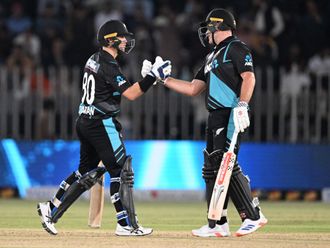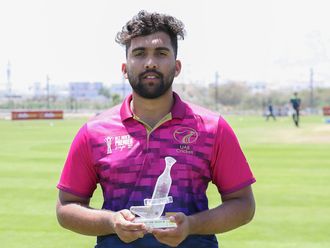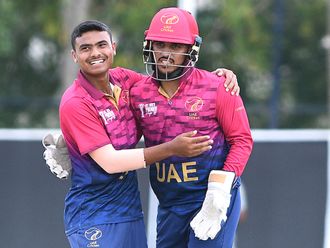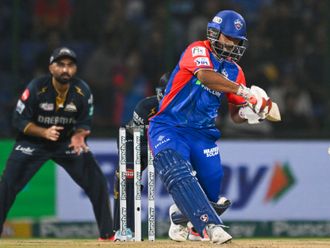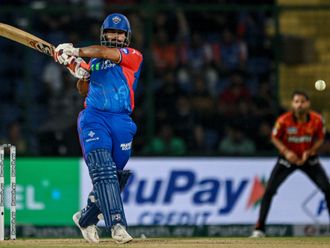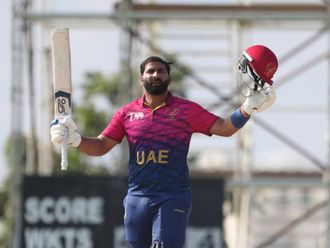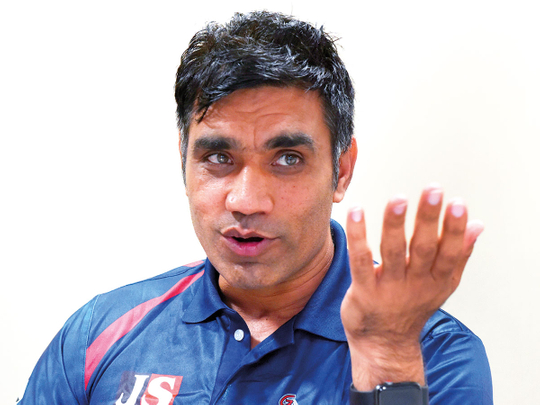
Dubai. Munaf Patel was once India’s fastest bowler and had played a big role in India’s 2011 World Cup victory. Team India’s bowling coach Eric Simons had even addressed him as the unsung hero of that World Cup.
Thirty-five-year-old Patel announced his retirement last month, wanting to give his place in the state team for the pacers that are waiting in the wings. He will now conduct pace bowlers’ camp for the UAE-based G Force Cricket Academy not only in the UAE but also in India and many countries.
In an exclusive interview with Gulf News, Patel talked about his experience as a pacer, his Indian Premier League (IPL) stint under Shane Warne’s captaincy for Rajasthan Royals and how he contributed to Team India’s success.
There was a time when you used to bowl at 140 kmph and even faster. At a time when Indians never bowled fast, how did you do it?
Rhythm is very important in bowling. If you do train hard and make yourself strong you can bowl fast. I was the fastest in India and had even touched 150 kmph. After I got a shoulder and back injury I had to reduce my pace or I wouldn’t have survived so long.
Why is it that very few Indians are able to bowl at over 150 kmph and how did injuries affect you?
When you are a kid you don’t know what kind of things you should do and not do (as a pacer). Today the training system is different and all teams have very good physiotherapists. This is why bowlers like Jimmy Anderson and Chris Broad have played in over 125 Test matches. In the past, pacers like Kapil Dev, in a span of 20 years played only close to 120 Tests. He never got injured as he was a legend. Today a pacer, if he plays 20 years, would have played 250 Test matches. Natural strength also matters. Brett Lee and Shoaib Akhtar were naturally strong and they worked hard too and hence could bowl consistently at around 150 kmph.
How was your IPL experience as you were part of it for nearly a decade?
It is undoubtedly the best league. Playing for 10 years was a great experience. I played under Shane Warne for Rajasthan Royals in the first year. I was very young then and was worried about how I will survive in the company of legends like Graeme Smith and Younis Khan in the team but Warne made it so easy for me.
Every day, after the match or after practice, Warne will take us all for party and always paid from his own pocket. Once I asked him why he pays when the team franchise is there, he told me that he is not worried about the money but only wants the team to be together. The way he motivated us and trusted us to perform was amazing and we won the trophy in the first IPL.
So do you think Warne should have captained Australia too?
Warne should have captained Australia or even coached the team. Frankly, he is being wasting his talent by being only a commentator. Once during an IPL match, leg spinner Piyush Chawla, who was playing for Kings XI Punjab, wanted to speak to Warne. Since Chawla asked me I sought permission from Warne and after the talk Chawla told me that Warne gave him so much confidence that he felt he could anything in this world. I had actually suggested Warne for Team India coach’s post to Dhoni before Gary Kirsten. Then, Team India always preferred a batting coach.
How was your experience with Team India especially your role in winning the 2011 World Cup?
It was my best experience to win the World Cup for my country after 28 years in India. There is too much pressure when you play for India and that too in India. I played in the 2007 World Cup in West Indies where we lost early. We read in the newspaper that angry fans had even thrown stones at Dhoni’s house and we were scared to return to India. In the next World Cup we were the champions.
How was it to play under Dhoni?
Dhoni trusted you and he is very cool. When your captain believes in you then you will want to deliver. Frankly being in the Team India dressing room itself used to be inspiring because seated near you are players like Sachin Tendulkar, Virender Sehwag, Dhoni, Yuvraj Singh, Harbhajan Singh and Zaheer Khan. This experience itself motivates you to give your best.
You have often been compared with pacer Glenn McGrath. What is the quality in him that impressed you most?
Frankly I should not be compared with McGrath as he is a legend. He is my favourite bowler. I always tried to emulate his line and length and generate the extra bounce he produced. Though I have retired now I am still trying to get his line and length and generate that bounce.
How do you find India’s present pace attack?
We have a good bowling line up and I feel Ishant Sharma has the experience to lead the attack as he has played in over 85 Test matches. Australian wickets are very flat and bouncy, so length is very important there to survive. Australians will play the cut and pull shots very well and if you don’t maintain the length it will be tough.
How hard is it for a pacer when you are hit around and how have you coped with it?
As a pacer one cannot survive being aggressive alone. If you are hit for a six, you have to come back the next ball. If you are angry over it then you will not survive. Anger should be in your eyes not in your brain.
What prompted you to retire last month though you are only 35?
It was a very tough decision. If I play for my domestic team some of the bowlers sitting on the bench may not get a chance. Since I am not playing for the country or in the IPL, I felt some of the boys should get a chance.
So what will be your future plan?
I want to give something back to the game from my experience. With G Force coach Gopal Jasapara we will stage pace camps soon. So I will be coming to Dubai often and also tour with Gopal and conduct pace camps in US, UK and in India.



